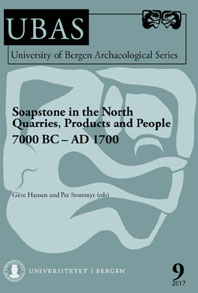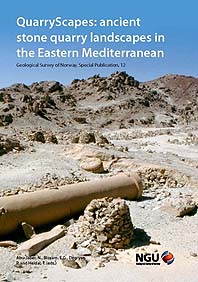
The medieval choir at Nidaros Cathedral just after reconstruction in the 1880s (left) and 1994 (right), before the last restoration in the early 2000s. All the white calcite crusts are a result of leaching of calcium hydroxide from Portland Cement used in the 1880s, and particularly during a restoration by 1920. Photos by the Nidaros Restoration Workshop and Per Storemyr.
This week I attended the international conference “Rediscovering Traditional Mortars” in Trondheim. The conference was hosted by the Nidaros Cathedral Workshop and it was part of the annual conferences organised by the British Building Limes Forum and its Nordic counterpart.
I was lucky to be invited to deliver two lectures, one on the experimental lime burning in Hyllestad earlier this year, and the Baker Memorial Lecture during the gala dinner. A very great honour to keep this traditional lecture for more than 230 delegates! I concentrated the lecture on the use of Portland Cement during the restoration of Nidaros Cathedral from 1869 on. Read on to get a glimpse of all the problems it has caused!
Ladies and gentlemen, dear colleagues!
I don’t like to interrupt fine dining and fine conversations! For we have the finest food and we are talking about the finest binder – the finest glue – that was ever invented! Again and again and again, across continents, independently: in the Middle East, in China, in Mesoamerica. We are celebrating lime tonight, the glue that binds us together! A grand material with a history reaching back perhaps 12000 years! But we are also troubled by another grand material, the material that shapes our modern world, a material we cannot do without, yet it is unsuitable for restoring the stone buildings that we care so much for: Portland cement. It gave us big hopes back then, in 1824, only 200 years ago, when Englishman Joseph Aspdin patented his invention. (In parentheses, as we know, he was standing on the shoulders of Roman giants).
I’ve been given a task tonight: to discuss Joseph Aspdin’s legacy at Nidaros Cathedral. How his invention ousted traditional, local lime during the restoration and reconstruction of the cathedral, which – as you know – started in 1869.
But first, I’m deeply honoured to deliver the Baker Memorial Lecture. I’m new to the Building Limes Forum, and I know very little about the pioneering work of Eve and Robert Baker at Wells Cathedral in the 1970s, the very start of the lime-wave that has swept across Europe since then. In response to the overall use of Portland Cement – in response to lots of damages at our stone buildings. Traditional lime is the answer, the material that was used to construct the buildings! I’ve been a follower of lime, but lately I’ve become a true addict! As you perhaps may have reckoned from my lecture about lime burning in Western Norway earlier today…
My knowledge about what the Bakers initiated at Wells and elsewhere is limited, but I know something about Nidaros Cathedral; for it has been deep within in my heart for nearly 30 years now. I made my doctoral thesis on the cathedral, I have written a book and many papers about it. And I worked at the cathedral for years. I sincerely want to thank my former employer, the Nidaros Restoration Workshop, for inviting me to give this lecture.
*
Nidaros Cathedral is the northernmost of Europe’s great medieval cathedrals. It is often called the “soapstone cathedral”, since it is largely built from this softest of stones, like so many old churches in Norway. This is a result of geology: We simply don’t have fine limestone up north. There is no real freestone here! And there isn’t much soapstone either, which is the closest you can come to a local freestone. Many quarries, no less than 70, to be precise, were put at work: Nidaros is also a “greenschist cathedral”, a “sandstone cathedral”, a “granite cathedral” – and, especially, a “marble cathedral”. The latter is in good English tradition; think of Purbeck marble! There are no less than 10 000 marble columns decorating the cathedral! For the Cathedral is generally an English cathedral, almost everything was based on English traditions and innovations.
We share a common heritage! Also as regards Portland Cement!
Over the last 150 years, Nidaros has also become THE Portland Cement cathedral. It is a true icon. It is regularly referred to in scientific works discussing the pros and cons of Portland Cement. Scientists are interested in the damages that we have reported; cracking of masonry, water infiltration, frost damages, and especially all the salts derived from cement, salts that simply eat up medieval stonework. There is also an aesthetic side to it, for the cathedral is renowned for its many white calcite crusts. Just like stalactites in a limestone cave. But at Nidaros the stalactites originate from – calcium hydroxide in Portland Cement.
*
When I started working at the cathedral almost 30 years ago, Portland Cement was the standard binder used in restoring its damaged stonework. I was not the only one questioning this practice. Restoration architects began their questioning as far back as in the 1950s. They didn’t do much for a change back then. 70 years later the tide has turned: Now the cathedral even has its own kiln producing traditional lime. Congratulations!
But why did Portland Cement get such a grip on the cathedral?
We all know the standard story about Portland Cement replacing traditional lime in Europe, and worldwide. In Trondheim there are some particularities. For Portland Cement was probably introduced to the region by the very architects that were in charge of the restoration in the mid-late 19th century. They were educated abroad, typically in Germany, so they very well knew about this new and promising material.
But the first load of Portland Cement for the cathedral came from England, it was shipped from Newcastle in 1869. It was extremely expensive. It was almost 10 times more costly than local lime produced across the region, at many places along the Trondheim Fjord.
Therefore, there was no question about SOLE use of cement. A little bit was added to the cheap local lime – with the aim of making it “stronger”. And the practice worked quite well. There are, in fact, few damages at places restored with this early form of lime-cement.
The architects soon turned to Germany and the Portland Cement factory in Hemmoor near Hamburg. Hemmoor, which is now a German national cement museum, became the most important supplier until the turn of the century, but by 1892 it got competition from the first Norwegian producer – the Slemmestad factory near Oslo.
With more producers and falling prices, the mortars used at the cathedral became more and more cement-rich, yet they still seem to have been reasonably good and adapted to the purpose.
This was until the end of the First World War.
For in 1918 a second cement factory was established in Norway, at Kjøpsvik, far up in the north. Production began by 1920 and from then on Kjøpsvik was the sole supplier to the cathedral through more than 70 years. Due to national regulations. Soon the traditional lime-cement mortars were replaced by pure cement mortars, even cement “soups” were injected into the masonry. And soon the cathedral started to suffer. Large parts of the newly built nave and the west front – as well as second-generation restoration works all over the cathedral became infested with this new cement. It is a cement with a major problem:
It has a very high component of alkaline salts!
For the cathedral, this has been disastrous. Cement-salts effectively “eat” up the stone fabric, in addition to the more general cement-problems, cracking and water and frost. If this is not enough; the latest building parts, the upper part of the west towers from the 1960s, are in fact not real natural stone constructions. They are concrete clad with soapstone.
One may wonder what will happen with the concrete. For with such a high content of alkaline salts, sodium carbonates to be more precise, it may be prone to “concrete disease”, or more correctly alkali-silica reactions. Many modern concrete constructions in Norway suffer from this disease. Hundreds of millions crowns have been put into the repair of such structures over the last decades.
Whatever the reason, the restoration workshop are facing troubles with the west towers, indeed, but I’m confident that they will solve the problem, as long as necessary grants are given. But it is, of course, not easy to restore a cathedral so infested with concrete and Portland cement mortars. In many cases it may be totally impossible to work with old-fashioned lime mortars. It may neither be desired at building parts reconstructed and rebuilt with the use of cement mortars only. These are modern, Neogothic constructions!
But medieval parts certainly can and should be restored using traditional, “fat” lime mortars!
Thus, we are faced with a classical situation. And it reminds us of good, old Aristotle, who stated, way back when: “Pros ton kairon” – do what the occasion requires! Be practical!
*
20 years ago, as a finalised my doctoral thesis on weathering and conservation of the Cathedral, I was rather pessimistic. Portland Cement was still being used and it was very difficult to obtain traditional Norwegian lime, as local/regional production had ceased decades ago. Although experimentation was underway, and the modern lime-wave had certainly also hit Norway, the general picture was rather bleak. On page 114 in my book, I wrote that the traditional production and use of lime is a forgotten craft in present-day Norway…
This was only 20 years ago. Although we now struggle with imported Natural Hydraulic Lime sold and used as “pure lime” (this is not nice!), the situation is rapidly improving; lime is much more available, used in many conservation projects, and – more importantly – the traditional craft of burning and slaking lime is spreading. At least five projects have been or are undertaken; in Oslo, at Røros, at Hamar, in Hyllestad – and not least here in Trondheim
We are experiencing a growing and much-needed diversity in our struggles to rediscover an almost forgotten craft. Yet, what have we really learnt from the projects? There are some videos and power-point presentations available, but very little that helps us really learn from each other. How has the new, local limes really performed at restoration works?
Thus, this is my challenge to all of us: Provide easily available, hard documentation. This recipe works, this does not work! Since The Nidaros Restoration Workshop is a centre for conservation in all of Norway, you have a very special responsibility, and you ought to be backed generously in the future by the national Directorate for Cultural Heritage! Start a national programme for local lime burning, slaking and use of local limes! It was a substantial industry until the Second World War, now it is time not only to carry out experimental work, but also to fully rediscover and investigate a major part of our cultural heritage!
How wonderful that this conference is showing that responsibility is taken! We meet, we discuss, we eat and we drink. Many new contacts are made! We are experiencing diversity across Europe, we are rediscovering our dear, almost forgotten craft!
*
I want to thank the organisers for a superb conference. I specifically want to thank all the British among us! We share a long history. You gave us lime a thousand years ago. But you also gave us Portland Cement in the 19th century! You gave us a hell of a lot of problems!
A big toast for lime! Tonight we celebrate the glue that binds us together!
*
If you want to learn more about the use of Portland Cement at Nidaros Cathedral, please see my two books:
Storemyr, P. (1997): The Stones of Nidaros. An Applied Weathering Study of Europe’s Northernmost Medieval Cathedral. Ph.d-thesis, no. 1997:92, Norwegian University of Science and Technology, Trondheim. Download PDF (19,1 MB).
Storemyr, P. (2015): Nidarosdomens grunnfjell. En reise i steinbryternes fotspor fra Det gamle Egypt til Europas nordligste katedral. Nidaros Domkirkes Restaureringsarbeiders Forlag, Trondheim, 412 s. [The quarries of Nidaros: A journey in stone from Ancient Egypt to Europe’s northernmost medieval cathedral] Excerpt at my academia.edu-page. More info at my blog.







Hi Per, did you read the story about Roman mortar: https://www.stone-ideas.com/2017/07/11/university-of-utah-geologist-it-was-the-saltwater-itself-that-made-the-concrete-in-roman-marine-buildings-so-enduring/.
Best Peter
Thanks! Interesting!